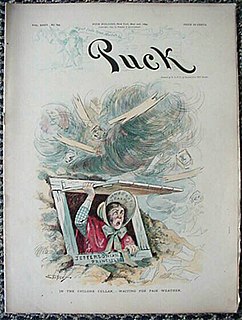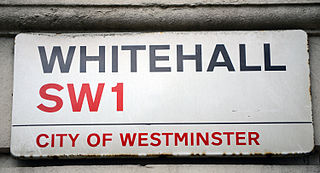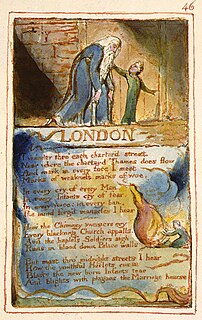Related Research Articles

A euphemism is an innocuous word or expression used in place of one that is deemed offensive or suggests something unpleasant. Some euphemisms are intended to amuse, while others use bland, inoffensive terms for concepts that the user wishes to downplay. Euphemisms may be used to mask profanity or refer to topics some consider taboo such as disability, sex, excretion, or death in a polite way.

A metaphor is a figure of speech that, for rhetorical effect, directly refers to one thing by mentioning another. It may provide clarity or identify hidden similarities between two different ideas. Metaphors are often compared with other types of figurative language, such as antithesis, hyperbole, metonymy, and simile. One of the most commonly cited examples of a metaphor in English literature comes from the "All the world's a stage" monologue from As You Like It:
An oxymoron is a figure of speech that juxtaposes concepts with opposing meanings within a word or phrase that creates an ostensible self-contradiction. An oxymoron can be used as a rhetorical device to illustrate a rhetorical point or to reveal a paradox. A more general meaning of "contradiction in terms" is recorded by the OED for 1902.
Alliteration is the conspicuous repetition of identical initial consonant sounds in successive or closely associated syllables within a group of words, often used as a literary device. A familiar example is "Peter Piper picked a peck of pickled peppers". Alliteration is used poetically in various languages around the world, including Arabic, Irish, German, Mongolian, Hungarian, American Sign Language, Somali, Finnish, Icelandic.

A figure of speech or rhetorical figure is a word or phrase that intentionally deviates from ordinary language use in order to produce a rhetorical effect. Figures of speech are traditionally classified into schemes, which vary the ordinary sequence of words, and tropes, where words carry a meaning other than what they ordinarily signify.
In rhetoric, a rhetorical device, persuasive device, or stylistic device is a technique that an author or speaker uses to convey to the listener or reader a meaning with the goal of persuading them towards considering a topic from a perspective, using language designed to encourage or provoke an emotional display of a given perspective or action. Rhetorical devices evoke an emotional response in the audience through use of language, but that is not their primary purpose. Rather, by doing so, they seek to make a position or argument more compelling than it would otherwise be.

An invocation may take the form of:

In rhetoric, an anaphora is a rhetorical device that consists of repeating a sequence of words at the beginnings of neighboring clauses, thereby lending them emphasis. In contrast, an epistrophe is repeating words at the clauses' ends. The combination of anaphora and epistrophe results in symploce.

Nisargadatta Maharaj, born Maruti Shivrampant Kambli, was an Indian guru of nondualism, belonging to the Inchagiri Sampradaya, a lineage of teachers from the Navnath Sampradaya and Lingayat Shaivism.
A paraprosdokian is a figure of speech in which the latter part of a sentence, phrase, or larger discourse is surprising or unexpected in a way that causes the reader or listener to reframe or reinterpret the first part. It is frequently used for humorous or dramatic effect, sometimes producing an anticlimax. For this reason, it is extremely popular among comedians and satirists such as Groucho Marx.
Satcitananda is an epithet and description for the subjective experience of the ultimate unchanging reality, called Brahman, in certain branches of Hindu philosophy, especially Vedanta. It represents "existence, consciousness, and bliss" or "truth, consciousness, bliss".

The Fruit of the Holy Spirit is a biblical term that sums up nine attributes of a person or community living in accord with the Holy Spirit, according to chapter 5 of the Epistle to the Galatians: "But the fruit of the Spirit is love, joy, peace, patience, kindness, goodness, faithfulness, gentleness, and self-control." The fruit is contrasted with the works of the flesh which immediately precede it in this chapter.
Diacope is a rhetorical term meaning repetition of a word or phrase with one or two intervening words. It derives from a Greek word thiakhop, which means "cut in two".
Owing to its origin in ancient Greece and Rome, English rhetorical theory frequently employs Greek and Latin words as terms of art. This page explains commonly used rhetorical terms in alphabetical order. The brief definitions here are intended to serve as a quick reference rather than an in-depth discussion. For more information, click the terms.
A tautophrase is a phrase or sentence that repeats an idea in the same words. The name was coined in 2006 by William Safire in The New York Times.
Repetition is the simple repeating of a word, within a short space of words, with no particular placement of the words to secure emphasis. It is a multilinguistic written or spoken device, frequently used in English and several other languages, such as Hindi and Chinese, and so rarely termed a figure of speech.
The dash is a punctuation mark consisting of a long horizontal line. It is similar in appearance to the hyphen but is longer and sometimes higher from the baseline. The most common versions are the en dash–, generally longer than the hyphen but shorter than the minus sign; the em dash—, longer than either the en dash or the minus sign; and the horizontal bar―, whose length varies across typefaces but tends to be between those of the en and em dashes.
"Zero" is the usual name for the number 0 in English. In British English "nought" is also used. In American English "naught" is used occasionally for zero, but "naught" is more often used as an archaic word for nothing. "Nil", "love", and "duck" are used by different sports for scores of zero.
The word "ain't" is a contraction for am not, is not, are not, has not and have not in the common English language vernacular. In some dialects ain't is also used as a contraction of do not, does not and did not. The development of ain't for the various forms of to be not, to have not and to do not occurred independently, at different times. The usage of ain't for the forms of to be not was established by the mid-18th century and for the forms of to have not by the early 19th century.
In literary criticism and rhetoric, a tautology is a statement which repeats an idea, using near-synonymous morphemes, words or phrases, effectively "saying the same thing twice." Tautology and pleonasm are not consistently differentiated in literature. Like pleonasm, tautology is often considered a fault of style when unintentional. Intentional repetition may emphasize a thought or help the listener or reader understand a point. Sometimes logical tautologies like "Boys will be boys" are conflated with language tautologies, but a language tautology is not inherently true, while a logical tautology always is.
References
- ↑ "Word of the Day Archive". Dictionary.reference.com. 2013-07-12. Archived from the original on 2013-10-19. Retrieved 2013-10-18.
- ↑ Chris Baldick (2015). The Oxford dictionary of literary terms (Fourth ed.). Oxford. ISBN 978-0-19-178323-4. OCLC 915617546.